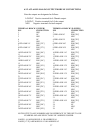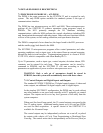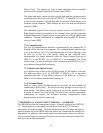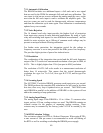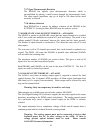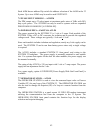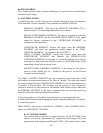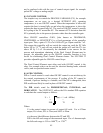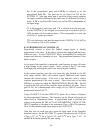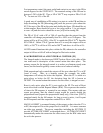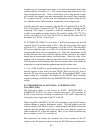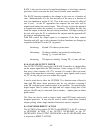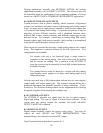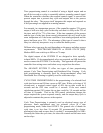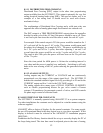
45
not be confused with with the type of control output signal: for example
pulsed DC voltage or analog output.
8.1.3 ON/OFF CONTROL
The simplest way to control the PROCESS VARIABLE (PV), for example
temperature on an oven, to a desired SETPOINT (SP), operating
temperature, is to use ON/OFF control. When the temperature is below the
setpoint the heat is turned fully on and when the temperature is above the
setpoint the heat is turned fully off. The result of ON/OFF control is usually
the cycling of the PV around the SP. The amount of PV deviation from the
SP is primarily due to the process dynamics rather then the controller gain.
Most ON/OFF controllers GAIN, [also known as DEADBAND,
HYSTERESIS, or SENSITIVITY] is a fixed percentage of the controller
input span. Thus, a gain of 1/2% of a 0-1400
o
F Type J span would be 7
o
F.
This means the controller will not switch the output on, until the PV falls
below SP by 3.5
o
F and will not switch the output off, until the PV rise
above SP by 3.5
o
F. Occasionally the deadband is too narrow for the
process and intermittent chattering of the Final Control Element may be
present. An adjustable gain on the ON/OFF controller function is very
useful for eliminating Final Control Element chatter. The SYSTEM 32
provides adjustable gain for ON/OFF control loops.
The Final Control Element most often used with ON/OFF control is the
relay. For example relays can be used for electrical heating loads, solenoid
valves, and two-position motor control.
8.1.4 PID CONTROL
PID or 3-mode control is used when ON/OFF control is not satisfactory for
the control requirements of the process. If cycling of the PV cannot be
tolerated, if process loading is a variable, and if the SP is changeable, then
PID would most likely be used in place of ON/OFF control.
The PID initials stand for PROPORTIONAL, INTEGRAL, and
DERIVATIVE. The SYSTEM 32 utilizes the ISA standard PID equation
to calculate the control output as follows:
U = 1 K
p
(e + 1 edt + K
D
de)
--- -- --
FSR T
I
dt
Where:
U is the control output in percent of output full scale. For a 4-20ma
output, 0% is 4ma, 50% is 12ma, and 100% is 20ma.
e is the error [the difference between the PV and SP].
FSR is the full scale range of the measured input. For a J thermocouple
the full scale range is -350 to 1400
o
F, or 1750
o
.



